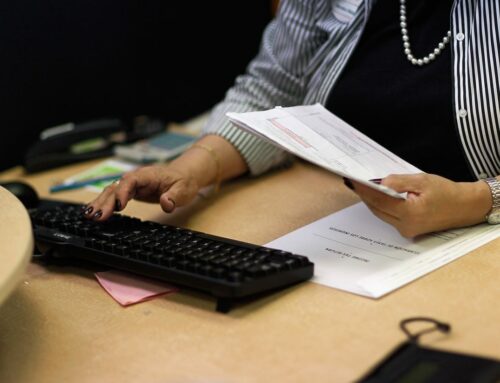
Temporary Suspension of Limits on Charitable Contributions
In most cases, the amount of charitable cash contributions taxpayers can deduct on Schedule A as an itemized deduction is limited to a percentage (usually 60 percent) of the taxpayer’s adjusted gross income (AGI). Qualified contributions are not subject to this limitation. Individuals may deduct qualified contributions of up to 100 percent of their adjusted gross income. A corporation may deduct qualified contributions of up to 25 percent of its taxable income. Contributions that exceed that amount can carry over to the next tax year. To qualify, the contribution must be:
- a cash contribution;
- made to a qualifying organization;
- made during the calendar year 2020
Contributions of non-cash property do not qualify for this relief. Taxpayers may still claim non-cash contributions as a deduction, subject to the normal limits.
The Coronavirus Tax Relief and Economic Impact Payments page provides information about tax help for taxpayers, businesses, tax-exempt organizations and others – including health plans – affected by coronavirus (COVID-19).
Temporary Increase in Limits on Contributions of Food Inventory
There is a special rule allowing enhanced deductions by businesses for contributions of food inventory for the care of the ill, needy or infants. The amount of charitable contributions of food inventory a business taxpayer can deduct under this rule is limited to a percentage (usually 15 percent) of the taxpayer’s aggregate net income or taxable income. For contributions of food inventory in 2020, business taxpayers may deduct qualified contributions of up to 25 percent of their aggregate net income from all trades or businesses from which the contributions were made or up to 25 percent of their taxable income.
The Coronavirus Tax Relief and Economic Impact Payments page provides information about tax help for taxpayers, businesses, tax-exempt organizations and others – including health plans – affected by coronavirus (COVID-19).
This article generally explains the rules covering income tax deductions for charitable contributions by individuals. You can find a more comprehensive discussion of these rules in Publication 526, Charitable Contributions, and Publication 561, Determining the Value of Donated Property. For information about the substantiation and disclosure requirements for charitable contributions, see Publication 1771. You can obtain these publications free of charge by calling 1-800-829-3676.
You may deduct charitable contributions of money or property made to qualified organizations if you itemize your deductions. Generally, you may deduct up to 50 percent of your adjusted gross income, but 20 percent and 30 percent limitations apply in some cases. Tax Exempt Organization Search uses deductibility status codes to identify these limitations.
Qualified Organizations
You may deduct a charitable contribution made to, or for the use of, any of the following organizations that otherwise are qualified under section 170(c) of the Internal Revenue Code:
- A state or United States possession (or political subdivision thereof), or the United States or the District of Columbia, if made exclusively for public purposes;
- A community chest, corporation, trust, fund, or foundation, organized or created in the United States or its possessions, or under the laws of the United States, any state, the District of Columbia or any possession of the United States, and organized and operated exclusively for charitable, religious, educational, scientific, or literary purposes, or for the prevention of cruelty to children or animals;
- A church, synagogue, or other religious organization;
- A war veterans’ organization or its post, auxiliary, trust, or foundation organized in the United States or its possessions;
- A nonprofit volunteer fire company;
- A civil defense organization created under federal, state, or local law (this includes unreimbursed expenses of civil defense volunteers that are directly connected with and solely attributable to their volunteer services);
- A domestic fraternal society, operating under the lodge system, but only if the contribution is to be used exclusively for charitable purposes;
- A nonprofit cemetery company if the funds are irrevocably dedicated to the perpetual care of the cemetery as a whole and not a particular lot or mausoleum crypt.
Timing of Contributions
Contributions must actually be paid in cash or other property before the close of your tax year to be deductible, whether you use the cash or accrual method.
Deductible Amounts
If you donate property other than cash to a qualified organization, you may generally deduct the fair market value of the property. If the property has appreciated in value, however, some adjustments may have to be made.
The rules relating to how to determine fair market value are discussed in Publication 561, Determining the Value of Donated Property.
Limitations on Deductions
In general, contributions to charitable organizations may be deducted up to 50 percent of adjusted gross income computed without regard to net operating loss carrybacks. Contributions to certain private foundations, veterans organizations, fraternal societies, and cemetery organizations are limited to 30 percent adjusted gross income (computed without regard to net operating loss carrybacks), however. Tax Exempt Organization Search uses deductibility status codes to indicate these limitations.
The 50 percent limitation applies to (1) all public charities (code PC), (2) all private operating foundations (code POF), (3) certain private foundations that distribute the contributions they receive to public charities and private operating foundations within 2-1/2 months following the year of receipt, and (4) certain private foundations the contributions to which are pooled in a common fund and the income and corpus of which are paid to public charities.
The 30 percent limitation applies to private foundations (code PF), other than those previously mentioned that qualify for a 50 percent limitation, and to other organizations described in section 170(c) that do not qualify for the 50 percent limitation, such as domestic fraternal societies (code LODGE).
A special limitation applies to certain gifts of long-term capital gain property. A discussion of that special limitation may be found in Publication 526, Charitable Contributions.
Foreign Organizations
The organizations listed in Tax Exempt Organization Search with foreign addresses are generally not foreign organizations but are domestically formed organizations carrying on activities in foreign countries. These organizations are treated the same as any other domestic organization with regard to deductibility limitations.
Certain organizations with Canadian addresses listed may be foreign organizations to which contributions are deductible only because of tax treaty. Besides being subject to the overall limits applicable to all your charitable contributions under U.S. tax law, your charitable contributions to Canadian organizations are subject to the U.S. percentage limits on charitable contributions, applied to your Canadian source income. A deduction for a contribution to a Canadian organization is not allowed if the contributor reports no taxable income from Canadian sources on the United States income tax return, as described in Publication 597.
Except as indicated above, contributions to a foreign organization are not deductible.
Reliance on Tax Exempt Organization Search
Revenue Procedure 2011-33, 2011-25 I.R.B. 887 describes the extent to which grantors and contributors may rely on the listing of an organization in electronic Publication 78 and the IRS Business Master File extract) in determining the deductibility of contributions to such organization. Grantors and contributors may continue to rely on the Pub.78 data contained in Tax Exempt Organization Search to the same extent provided for in Revenue Procedure 2011-33.
Similar reliance provisions apply to an organization’s foundation classification as it appears in the list. See also Revenue Procedure 89-23.





